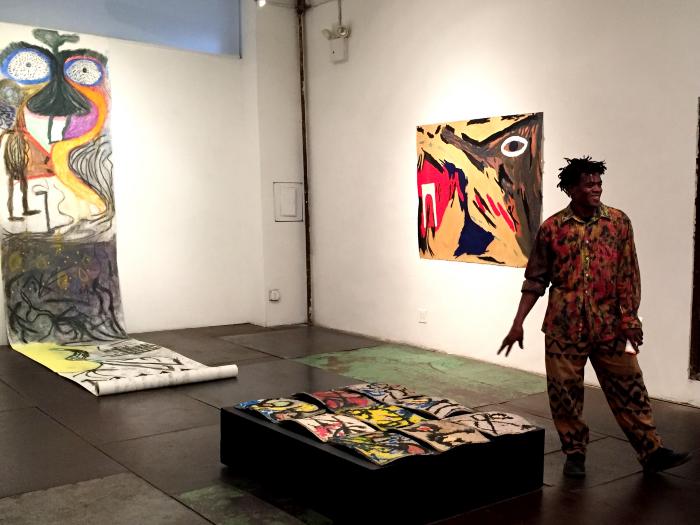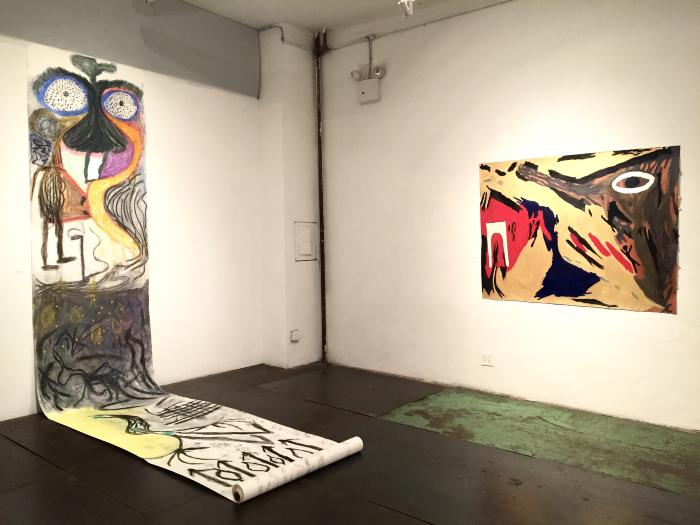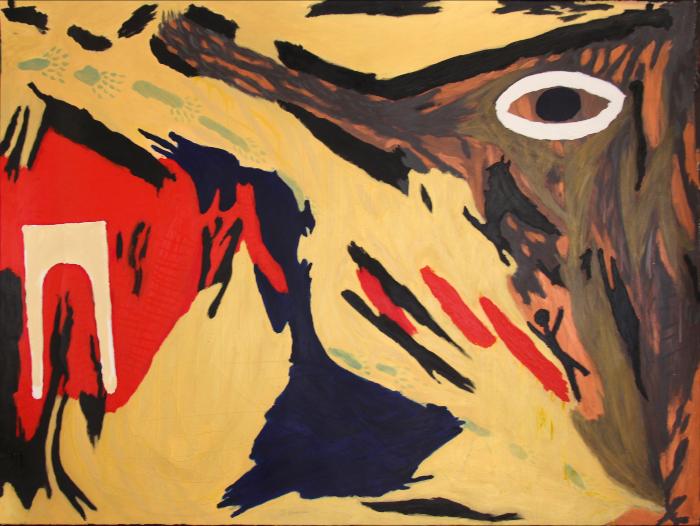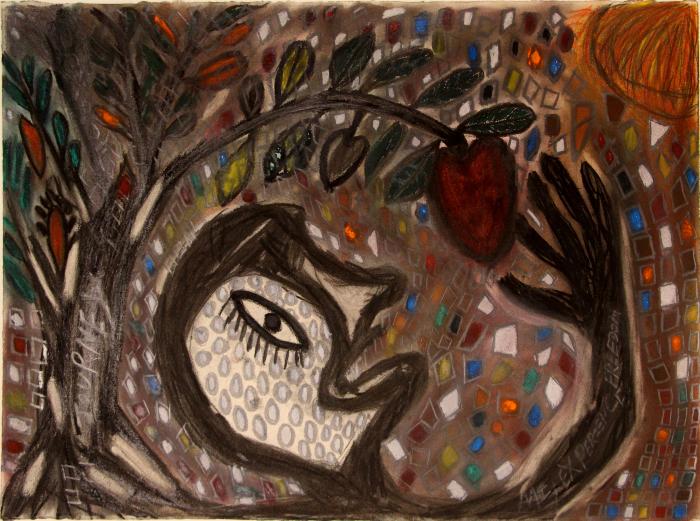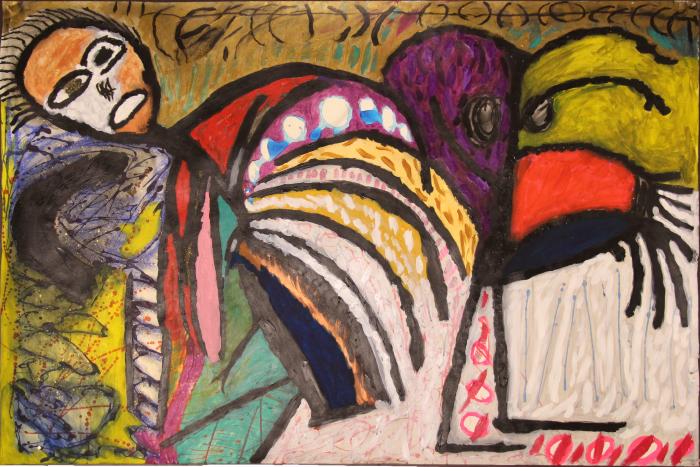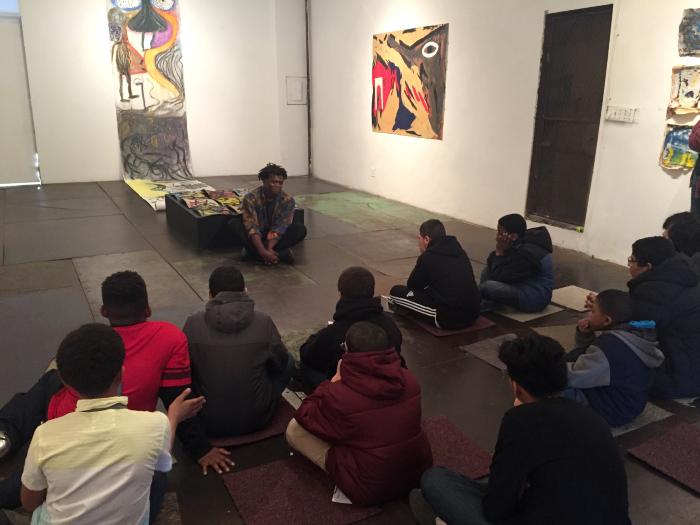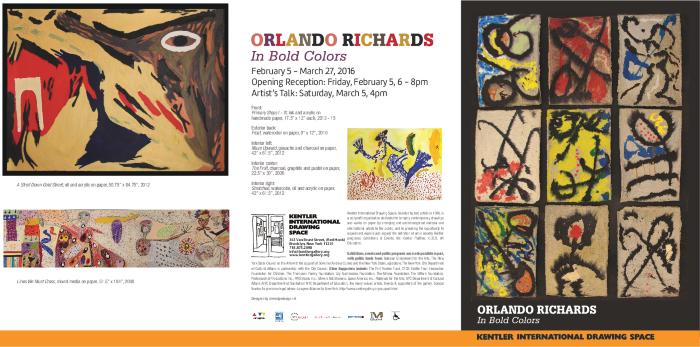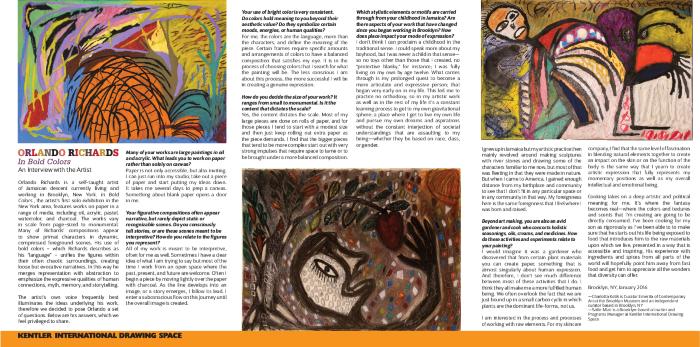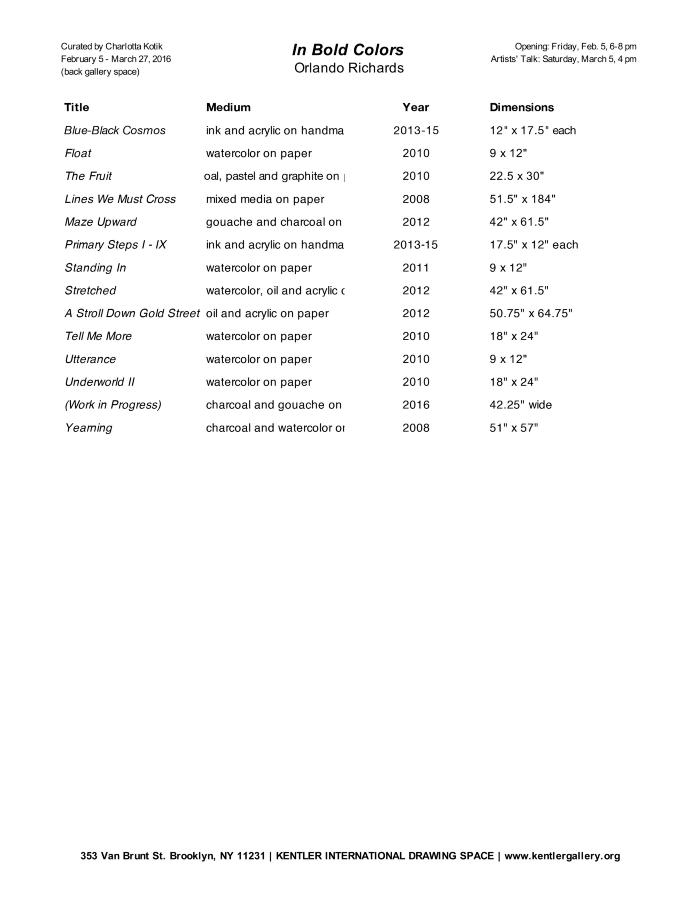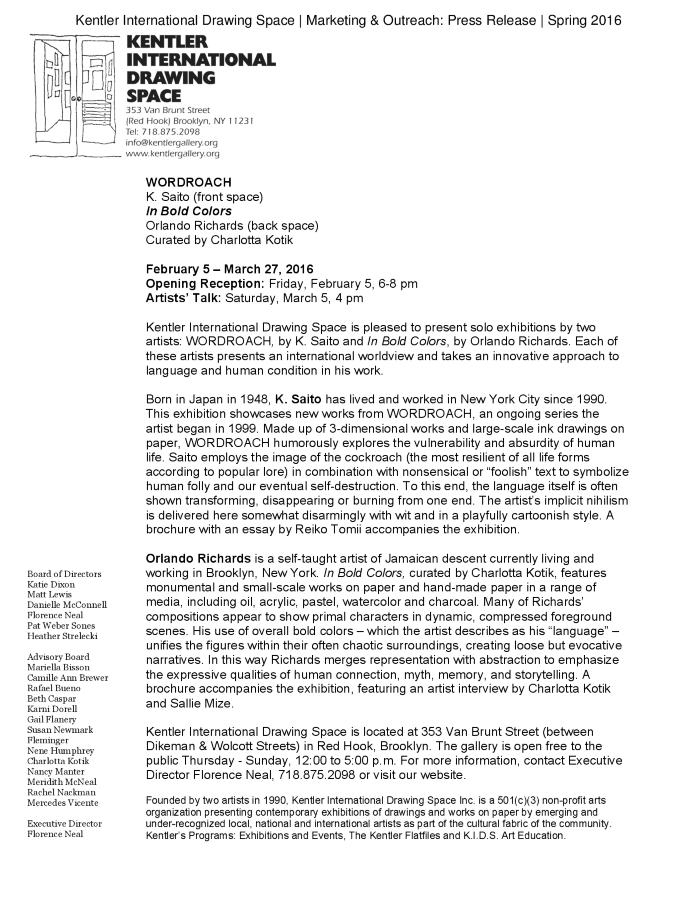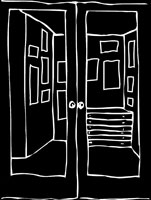exhibition
Orlando Richards, In Bold Colors
Date
February 5 – March 27, 2016Opening Reception
February 5, 2016Curated By
Charlotta Kotikexhibition Images
Click to Enlarge.
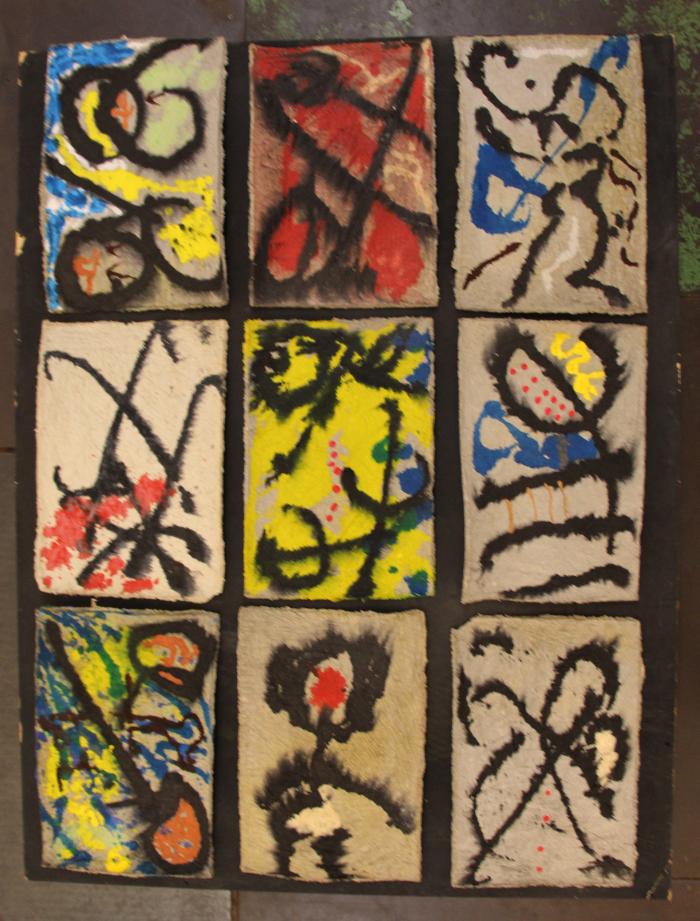
Orlando Richards, "Primary Steps I - IX" ink and acrylic on handmade paper, 17.5" x 12" ea., 2013-2015.
Press and Promotion
About the exhibition
Orlando Richards, In Bold Colors
Curated by Charlotta Kotik
February 5 – March 27, 2016
Opening Reception: Friday, February 5, 6-8 pm
Artists’ Talk: Saturday, March 5, 4 pm
Orlando Richards, In Bold Colors
An Interview with the Artist
Orlando Richards is a self-taught artist of Jamaican descent currently living and working in Brooklyn, New York. In Bold Colors , the artist’s first solo exhibition in the New York area. features works on paper in a range of media, including oil, acrylic, pastel, watercolor, and charcoal. The works vary in scale from page-sized to monumental. Many of Richards’ compositions appear to show primal characters in dynamic, compressed foreground scenes. His use of bold colors – which Richards describes as his “language” – unifies the figures within their often chaotic surroundings, creating loose but evocative narratives. In this way he merges representation with abstraction to emphasize the expressive qualities of human connections, myth, memory, and storytelling.
The artist’s own voice frequently best illuminates the ideas underlying his work, therefore we decided to pose Orlando a set of questions. Below are his answers, which we feel privileged to share.
Many of your works are large paintings in oil and acrylic. What leads you to work on paper rather than solely on canvas?
Paper is not only accessible, but also inviting. I can just run into my studio, take out a piece of paper and start putting my ideas down. It takes me several days to prep a canvas. Something about blank paper opens a door in me.
Your figurative compositions often appear narrative, but rarely depict static or recognizable scenes. Do you consciously tell stories, or are these scenes meant to be interpretive? How do you relate to the figures you represent?
All of my work is meant to be interpretive, often for me as well. Sometimes I have a clear idea of what I am trying to say but most of the time I work from an open space where the past, present, and future are welcome. Often I begin a piece by moving lightly over the paper with charcoal. As the line develops into an image, or a story emerges, I follow its lead. I enter a subconscious flow on this journey until the overall image is created.
Your use of bright color is very consistent. Do colors hold meaning to you beyond their aesthetic value? Do they symbolize certain moods, energies, or human qualities?
For me, the colors are the language, more than the characters, and define the meaning of the piece. Certain frames require specific amounts and arrangements of colors to have a balanced composition that satisfies my eye. It is in the process of choosing colors that I search for what the painting will be. The less conscious I am about this process, the more successful I will be in creating a genuine expression.
How do you decide the size of your work? It ranges from small to monumental. Is it the content that dictates the scale?
Yes, the content dictates the scale. Most of my large pieces are done on rolls of paper, and for those pieces I tend to start with a modest size and then just keep rolling out extra paper as the piece demands. I find that the bigger pieces that tend to be more complex start out with very strong impulses that require space to tame or to be brought under a more balanced composition.
Which stylistic elements or motifs are carried through from your childhood in Jamaica? Are there aspects of your work that have changed since you began working in Brooklyn? How does place impact your mode of expression?
I don’t think I can proclaim a childhood in the traditional sense. I could speak more about my boyhood, but I was never a child in that sense—so no toys other than those that I created, no “protective blanky,” for instance; I was fully living on my own by age twelve. What carries through is my prolonged quest to become a more articulate and expressive person; that began very early on in my life. This led me to practice no orthodoxy, so in my artistic work as well as in the rest of my life it’s a constant learning process to get to my own gravitational sphere; a place where I get to live my own life and pursue my own dreams and aspirations without the constant interjection of societal understandings that are assaulting to my being—whether they be based on race, class, or gender.
I grew up in Jamaica but my artistic practice then mainly revolved around making sculptures with river stones and drawing some of the characters familiar to me now, but most of that was fleeting in that they were made in nature. But when I came to America, I gained enough distance from my birthplace and community to see that I don’t fit in any particular space or in any community in that way. My foreignness here is the same foreignness that I feel where I was born and raised.
Beyond art making, you are also an avid gardener and cook who concocts holistic seasonings, oils, creams, and medicines. How do these activities and experiments relate to your painting?
I would imagine it was a gardener who discovered that from certain plant materials you can create paper, something that is almost singularly about human expression. And therefore, I don’t see much difference between most of these activities that I do. I think they all make me a more fulfilled human being. We often overlook the fact that we are just bound up in a small carbon cycle in which plants are the dominant life-forms, not us.
I am interested in the process and processes of working with raw elements. For my skincare company, I find that the same level of fascination in blending natural elements together to create an impact on the skin or on the function of the body is the same way that I yearn to create artistic expression that fully represents my momentary positions as well as my overall intellectual and emotional being.
Cooking takes on a deep artistic and political meaning for me. It’s where the fantasy becomes real—where the colors and textures and scents that I’m creating are going to be directly consumed. I’ve been cooking for my son as rigorously as I’ve been able to to make sure that he starts out his life being exposed to food that introduces him to the raw materials upon which we live, presented in a way that is accessible and inspiring. His experience with ingredients and spices from all parts of the world will hopefully point him away from fast food and get him to appreciate all the wonders that diversity can offer.
Brooklyn, NY, January 2016
—Charlotta Kotik is Curator Emerita of Contemporary Art at the Brooklyn Museum and an independent curator based in Brooklyn, NY
—Sallie Mize is a Brooklyn-based art writer and Programs Manager at Kentler International Drawing Space
